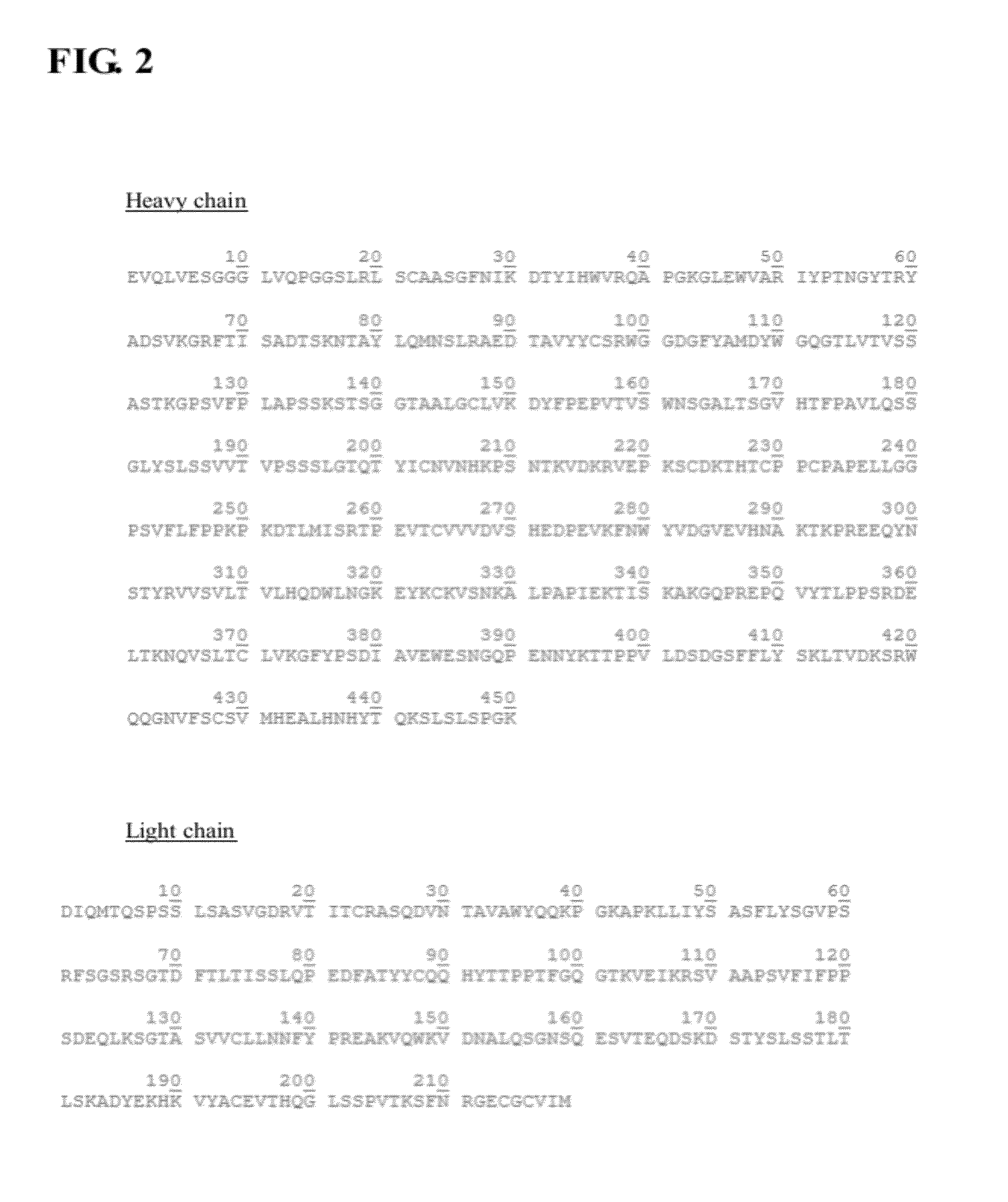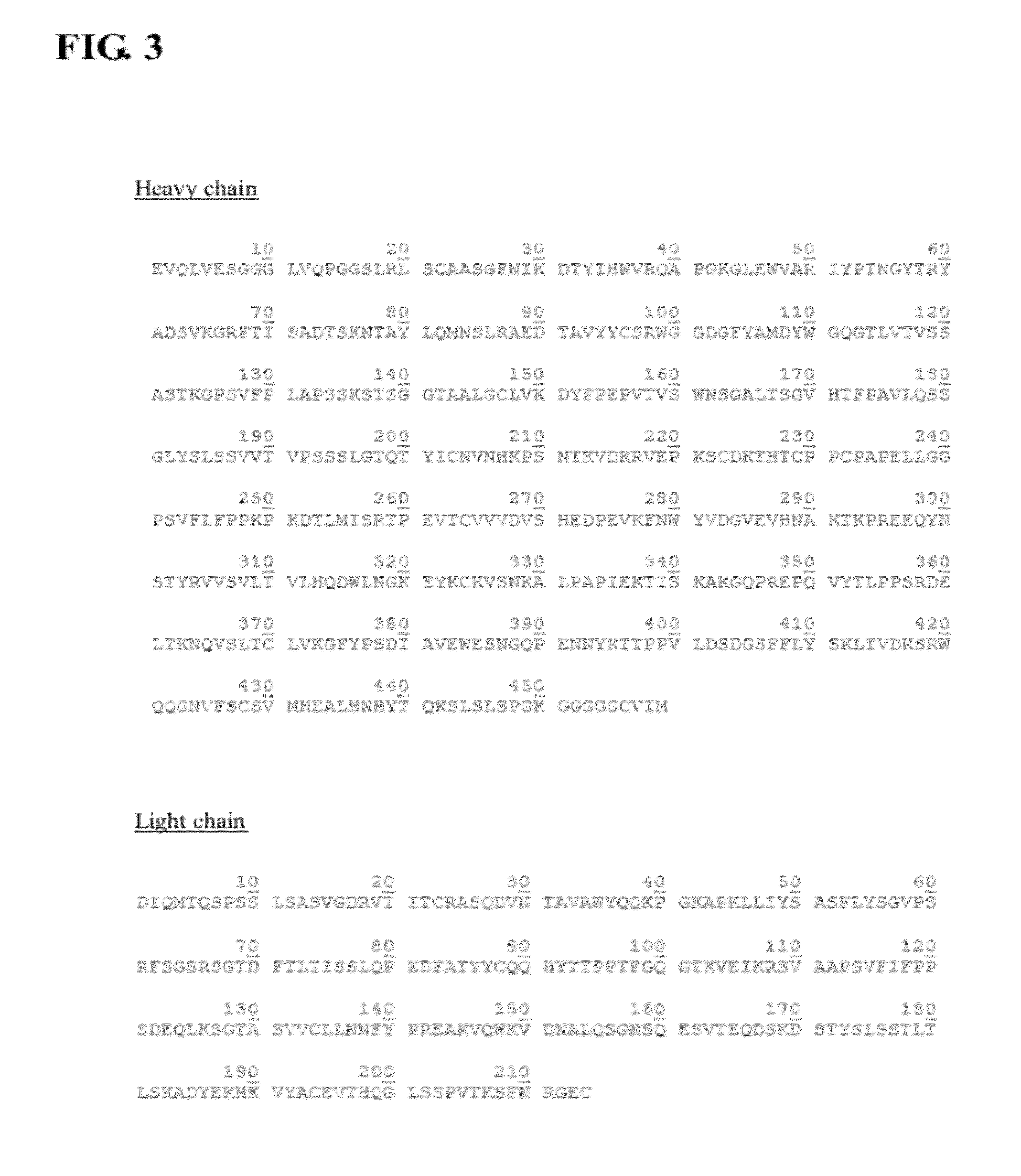Protein-active agent conjugates and method for preparing the same
- Summary
- Abstract
- Description
- Claims
- Application Information
AI Technical Summary
Benefits of technology
Problems solved by technology
Method used
Image
Examples
embodiment 1
[0114]A method for preparing a protein-active agent conjugate according to one embodiment of the invention comprises: (a) expressing a protein having an amino acid motif that can be recognized by an isoprenoid transferase; (b) enzymatically reacting, using the isoprenoid transferase, the expressed protein and at least one isosubstrate having a first functional group (FG1), thereby producing a functionalized protein; (c) attaching a second functional group (FG2) to an active agent, thereby producing a functionalized active agent; and (d) reacting the functionalized protein with the functionalized active agent, thereby producing the protein-active agent conjugate.
[0115]The term “protein” used herein is understood as two or more independently selected natural or non-natural amino acids joined by a covalent bond (e.g., a peptide bond). A peptide can include 2, 3, 4, 5, 6, 7, 8, 9, 10, 11, 12, 13, 14, 15, 16, 17, 18, 19, 20, or more natural or non-natural amino acids joined by peptide bo...
embodiment 2
[0155]A method for preparing a protein-active agent conjugate according to another embodiment comprises: (a) expressing a protein having an amino acid motif that can be recognized by an isoprenoid transferase; (b) attaching an isosubstrate of an isoprenoid transferase to an active agent; and (c) enzymatically reacting, using the isoprenoid transferase, the expressed protein with the active agent attached to the isosubstrate.
[0156]In this embodiment, once a protein having an amino acid motif that can be recognized by an isoprenoid transferase is expressed, the protein is reacted with an active agent attached to an isosubstrate of the isoprenoid transferase. In this case, thiol-maleimide conjugation may occur. However, even if thiol-maleimide conjugation occurs, the active agents are conjugated at the targeted positions only according to the present invention. Accordingly, a problem associated with the prior art that a non-homogeneous mixture is produced is avoided.
[0157]2. Protein-Ac...
example 1
Preparation of Ab(M)-CAAX
[0187]1-1. Construction, Expression, and Purification of Herceptin-CAAX
[0188]Modified Herceptin antibodies were generated using standard recombinant DNA technology and PCR cloning protocols with pNATABH::Herceptin HC plasmid or pNATABL::Herceptin LC plasmid. Recombinant plasmids were expressed in an HEK293E cell line by transient transfection. The antibodies were separated and purified by protein A column chromatography.
[0189]Construction of Herceptin-HC-GCVIM and Herceptin-LC-GCVIM
[0190]Modified Herceptin antibodies were generated using standard PCR cloning protocols. Generally, Herceptin-HC-GCVIM and Herceptin-LC-GCVIM plasmids were constructed by inserting a DNA sequence encoding a CAAX motif (e.g., GCVIM, G5CVIM, GCVIM, G10CVIM, or G10CVLL), to the C-terminus of the heavy chain or light chain encoded in the pNATABH::Herceptin HC or pNATABH::Herceptin LC plasmid.
[0191]For example, a SacII recognition sequence is present at amino acid 172 in the C-terminus...
PUM
| Property | Measurement | Unit |
|---|---|---|
| Affinity | aaaaa | aaaaa |
| Antigenicity | aaaaa | aaaaa |
Abstract
Description
Claims
Application Information
 Login to View More
Login to View More - R&D
- Intellectual Property
- Life Sciences
- Materials
- Tech Scout
- Unparalleled Data Quality
- Higher Quality Content
- 60% Fewer Hallucinations
Browse by: Latest US Patents, China's latest patents, Technical Efficacy Thesaurus, Application Domain, Technology Topic, Popular Technical Reports.
© 2025 PatSnap. All rights reserved.Legal|Privacy policy|Modern Slavery Act Transparency Statement|Sitemap|About US| Contact US: help@patsnap.com



